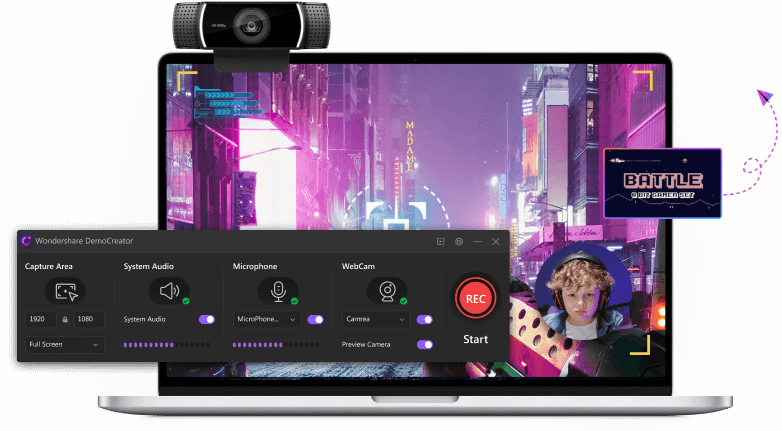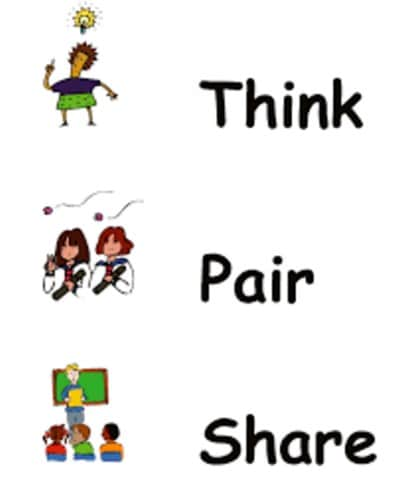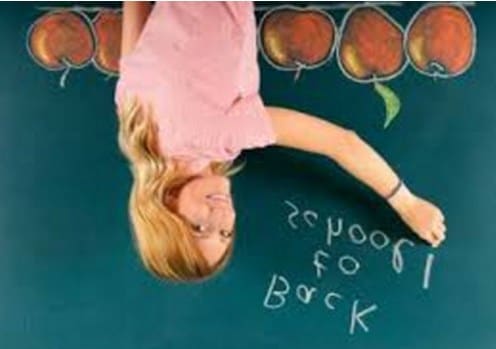Online Class Recorder
- ❶ Record online courses in high quality.
- ❷ Supports you to record screen, microphone, and webcam synchronously.
- ❸ Highlight the key point that you did not sure with the screen drawing tool.

How to Flip the Classroom: 6 Models and 9 Activities
Flipped classroom is a model that delivers basic structure of a course and its homework through videos. Usually, students are shown a small video that goes through the key points of a coming lecture beforehand in order to give them the idea of what they should be mentally prepared for.
Ideally, with the use of several efficient and effective digital tools , students become more engaged in brainstorming and looking for answers during the classroom.

Part1. What is Flipped Classroom?
On the other hand, many educational reformists believe that flipped classroom is the revolution we need to see in field of education but it is merely the first step towards it.
It is true that when students have basic ideas engraved in their minds they will be more active during the class but this technique cannot be relied on for enhancing educational system.
Like many other techniques, this is a tool which can be used for effective learning of the students. It is still the teacher who must direct the class and take control of when and how to use tools like flipped classroom.
Part2. Questions to Consider when Flipping the Classroom
1. Does the Provided Content Trigger Thought Process?
Most students will question the need to watch the content their teacher puts up and if they don’t find it inspiring or if it does not make them want to broaden their thinking abilities.
2. Are You Smart with Engaging Models?
Being a teacher, one must always know how to bring in different techniques or engaging models such as PBL (Project-Based Learning) or UBD (Understanding by Design) to make this method more effective.
3. Have you Planned Technological Aspects of Flipped Classroom?
Flipped classroom model needs proper planning such as if the teacher will upload the same video for all students or will they be give option between two or more for their learning.
4. How to Reflect on the Progress of Flipped Classroom?
In order to make the most out of a flipped classroom model, it is necessary to reflect and calculate the efficiency of the method and how is it helping students in learning.
Part3. Models and Activities of Flipped Classroom
- Model 1. The Standard Backwards Classroom
- Model 2. The Faux Flipped Classroom
- Model 3. The Demonstration-Focused Flipped Classroom
- Model 4. The Discussion-Oriented Flipped Classroom
- Model 5. Flipping Teacher
- Model 6. The Virtual Flipped Classroom
Model 1. The Standard Backwards Classroom
In this flipped classroom method, students are usually assigned to watch the video, listen to audio or given reading material before their lecture time which allows them to swallow information and get their head around key concepts.
Teacher can engage the classroom in brainstorming through question, arrange a multiple choice questionnaire to ensure learning etc. This method increases teacher-student time and even gives more time for one-on-one conversation with every student to answer queries or enhance learning process.
Model 2. The Faux Flipped Classroom
This method is effective for students who do not have privilege of computers or internet access at home and younger learners as well. The Faux Flipped Classroom Model allows students to play multimedia in classroom and work on it on their own pace. This allows students to work through the information on their own and teacher is there to guide them and answer their questions. Once each and every one of the students in the classroom is done with watching the assigned content, teacher moves on with other activities to see what their student has learned from the given material. This method also ensures that all students are staying on task and each one of them is involved in completing class-work.
Model 3. The Demonstration-Focused Flipped Classroom
Some specific subjects such as chemistry, physics etc. demand repetition of content in order to allow students to absorb the information that is being shared in the classroom. This method also ensures that students are given time to process information on their own pace as information is repetitive and they can grasp it whenever their concepts have been cleared.
Model 4. The Discussion-Oriented Flipped Classroom
This type of flipped classroom method is especially helpful in teaching subjects that are context-based for example literature, art, history etc. In this method, teacher plays relevant content that can be a TED Talk, a YouTube video, documentary or any other related lecture and a specific time is assigned to discussion afterwards. The discussion helps in sharing ideas derived from shown content, brainstorming, raising question for further discussion and clearing concepts among students. Class based activities on individual level can be divided in two categories:
A. Individual activities:
Activity 1: Round Robin

Classroom is divided in small groups of 4-6 students each and they are given 5-15 minutes during which one member says one word related to the content they were shown. After that, another member says one word triggered by the first one and so on. This activity is completed when each member of the group has given five to six words on the topic and activity is concluded.
Activity 2: Fishbowl Discussion

A group of 3-5 students is given 15-20 minutes to discuss the given topic as the rest of the class listens carefully. Teacher can interrupt the group if necessary to direct their conversation whereas the rest of the students can take notes and critique the discussion. Once the activity is completed, other students can give their feedback and strike up discussion.
B. Group activities:
Activity 1: Think-Pair-Share

Students are given critical content or quizzical question to answer within 5-15 minutes. Once they are done, they will discuss their answers or thoughts in pairs of two and afterwards the whole class will be involved in the same discussion.
Activity 2: Three-Step Interview
For this activity, students are first grouped in pairs of two. One student questions the other on the content they have learned from video or previous lectures. The student will have to come up with questions on his own. Once this part of the activity is over, the pair will share their gathered information with another pair.
Activity 3: Affinity Grouping
Students are divided in groups of 3-5 and given 30-45 minutes for writing down their ideas individually and then sharing them with the rest of the group. This activity ensures that each student is learning the same things as the other.
Activity 4: Dyadic Essay
Each student comes with a structured question about the video or related topic and asks another student to answer it. Within time span of 30-45 minutes, students will answer each other questions and later on share it with the rest of the class as teacher adds, directs and manipulates the answer for an ideal model.
Activity 5: Case Study
Students are given 1 to 2 hours of time span and divided in groups of 3 to 6 people who use theoretical information and apply it on real life situations. Once they have devised a solution for problems, they can share it with rest of the class.
Model 5. Flipping the Teacher

Teacher can also make use of flipped classroom model by assigning students to make flipped content of their own through role-play. Students will be asked to play their videos in the classroom. There are two methods for this:
Activity 1: Role Play
Students take up on different roles and play them for the demonstration of what they have learned in the class. It also helps other students in understanding the topic better.
Activity 2: Group Investigation
Students are divided in groups of 2-5 and given 1-2 hours to discuss an article assigned previously. This allows students for an in-depth understanding of the topic.
Model 6. Virtually Flipped Classroom
This type of flipped classroom model is ideal for university level students where professors will set up a video or documentary during lecture time, assign further homework and collect work. Students are given office hours to have one-on-one discussion with their professors for learning further.
Conclusion:
From above, we've learned the 6 models and 9 activities about the flipped classroom, which is a model that delivers the basic structure of a course and its homework through videos. If students want to make the flipped classroom screen recording to go through the key points of a coming lecture, then the Wondershare DemoCreator will be a great tool to finish. Which can not only record the lecture, but also supports you to highlight the key points. At the same time, after recording, it supports you to make further editing.
 Secure Download
Secure Download Secure Download
Secure Download


